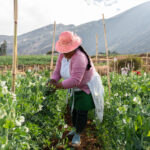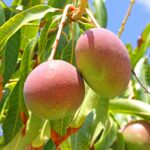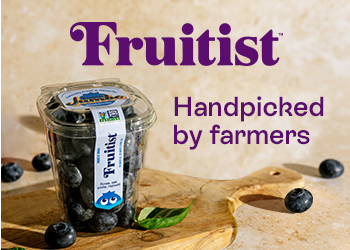Agronometrics in Charts: Achievements and prospects of Morocco's blueberry journey

In this installment of the ‘Agronometrics In Charts’ series, we analyze Morocco's blueberry journey. Each week the series looks at a different horticultural commodity, focusing on a specific origin or topic visualizing the market factors that are driving change.
Morocco's success in the international blueberry realm stems from strategic investments, advantageous agro-climatic conditions, and proactive market diversification. What began as a small enterprise in the early 1990s has turned the country into a blueberry powerhouse.
The journey began with initial trials in berry cultivation during the early 1990s, but it wasn't until 2004 that large-scale commercial production took off. By 2005, a handful of Moroccan producers had embarked on blueberry cultivation, mostly in the Loukos Gharb region in the north. The next decade was one of slow, steady growth for the industry.
However, from 2015 onwards, the industry experienced rapid growth, fuelled by foreign investment and the expertise of seasoned farmers. This growth extended cultivation areas beyond Loukos Gharb to include other parts of the country such as Agadir in the center-north and Dakhla in the south. In 2020, Morocco's blueberry production soared to 35,100 tons, a 19-fold increase over its production in 2005.

Source: USDA Market News via Agronometrics.
(Agronometrics users can view this chart with live updates here)

Source: USDA Market News via Agronometrics.
(Agronometrics users can view this chart with live updates here)
The 2023/24 season marked a significant milestone for Morocco's blueberry industry. The country exported approximately 67,300 tons of fresh blueberries, representing a 25% increase from the previous season. This impressive growth underscores Morocco's expanding influence in the global blueberry market.
Morocco's blueberry exports showed significant growth across several European markets in the 2023/24 season. Spain continued to be the primary importer with 20,100 tons, an 11% rise on the previous season. The UK imported 14,600 tons, an increase of nearly 33%, and the Netherlands 14,500 tons, an increase of 42%. Germany saw a 25% increase to 4,300 tons and France’s imports from Morocco rose 19% to 3,900 tons. Besides Europe, Morocco also extended its reach to the Middle East, exporting 1,800 tons to the UAE, Saudi Arabia, Qatar, Kuwait and Bahrain. In the case of North America, shipments consisted of 360 tons to the United States and 900 tons to Canada. Southeast Asia was another important market, with Hong Kong, Singapore and Malaysia being important markets.

Source: USDA Market News via Agronometrics.
(Agronometrics users can view this chart with live updates here)
Several key factors have contributed to Morocco's success in the blueberry sector. The country's favorable climate, characterized by mild winters and warm, dry summers, allows for multiple harvests and high yields. Souss and Oriental, for example, have rich, well-drained soils that elevate the berries’ flavor and firmness. Additionally, Morocco's geographical proximity to Europe enables quick shipment of fresh fruit, ensuring quality upon arrival. Morocco is also diversifying its export markets, focusing on regions like Canada, Hong Kong, and the Middle East, thereby reducing reliance on traditional partners like Spain and the UK.
The harvests for the current season are projected to hit 80,000 tons, a figure that underscores the particularly favorable conditions of the season. "Moroccan blueberries are known for their high quality, but demand for high-value fruits is growing," says an industry source. The synergy of an exceptional product and advantageous logistical conditions positions Morocco as a frontrunner in blueberry production, appealing to importers globally, with a notable demand emerging from Europe and the Middle East.
The Asian and North American markets are also engaging, reflecting the sector's international reach. Morocco's ascendancy in the blueberry industry transcends quality; it has carved a niche by introducing specific varieties that resonate with the international market's demands.
Nevertheless, Morocco encounters growing competition from both emerging and established producers. With global production volumes on the rise, Moroccan producers are compelled to innovate continuously to stay competitive. Their focus on innovative varieties and unparalleled quality seems to be fruitful, as Moroccan blueberries garner increasing demand in international markets, including North America, which faced supply challenges last year. "Last year, we had difficulties supplying our customers in North America, due to pressure from other markets. This year, we have concentrated our efforts on better-distributing business opportunities and avoiding these bottlenecks," says an industry source.
Looking ahead, Morocco aims to further increase its blueberry production. The country is exploring opportunities to extend its harvest season by expanding cultivation into southern regions like Dakhla for earlier yields and the Atlas Mountains for later harvests. This strategic expansion is expected to enhance Morocco's competitiveness in the global blueberry market.














































